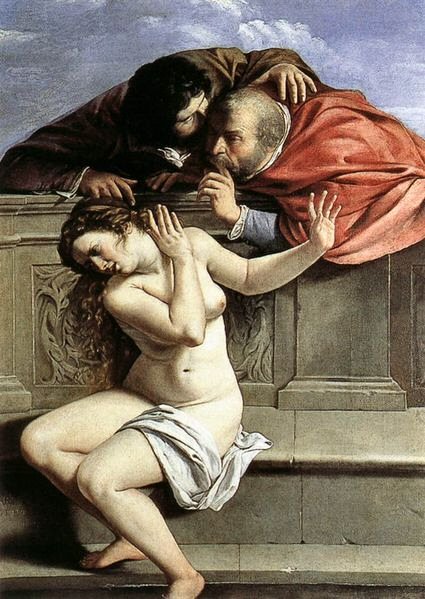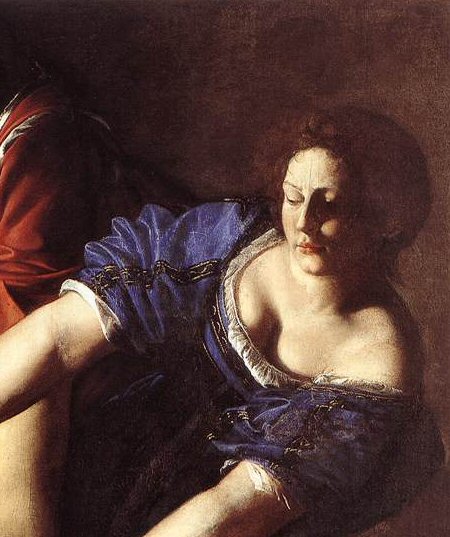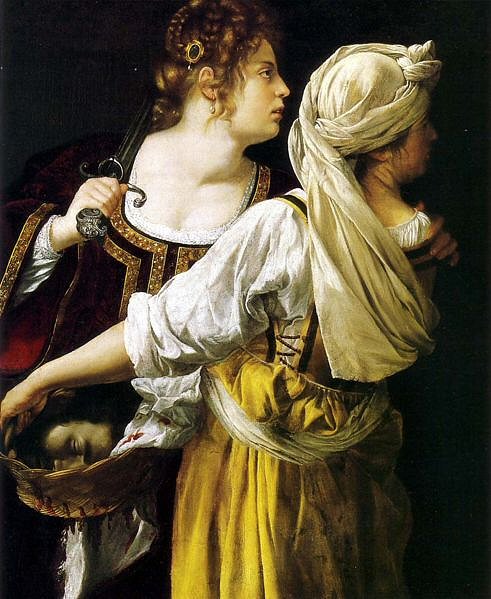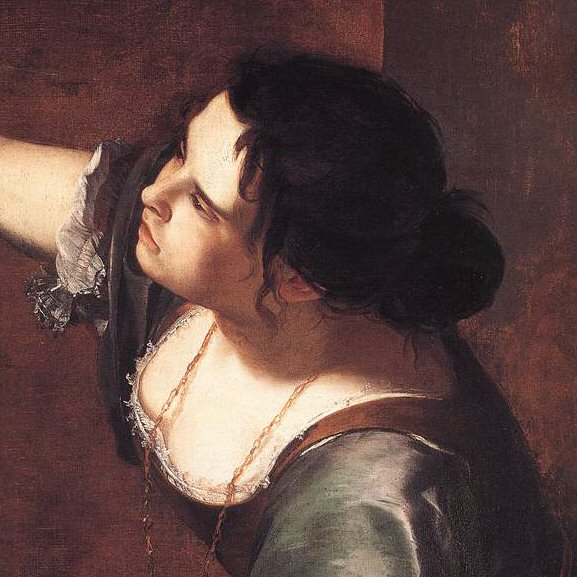|
La Chambre Des Reines
|
Paintings
|
Artemisia Gentileschi 1593- ca 1652 (click on painting to enlarge) Artemisia Gentileschi was the most important woman painter of Early Modern Europe and Renaissance Italy, because of the excellence of her work, the originality of her treatment of traditional subjects, and the number of her paintings that have survived. She painted in a style influenced by Caravaggio, but was nonetheless strongly individual. She was both praised and disdained by contemporary critical opinion, recognized as having genius, yet seen as monstrous because she was a woman exercising a creative talent thought to be exclusively male. She was born in Rome on July 8, 1593 and like many other women artists of her era who were excluded from apprenticeship in the studios of successful artists, Gentileschi was the daughter of a painter by the name of Orazio Gentileschi. Her mother died when Artemisia was twelve. Her father trained her as an artist and introduced her to the working artists of Rome, including Caravaggio, whose chiaroscuro style (contrast of light and dark) greatly influenced Artemisia's work. Other than artistic training, she had little or no schooling; she did not learn to read and write until she was adult. However, by the time she was seventeen, she had produced one of the works for which she is best known, her stunning interpretation of "Susanna and the Elders" (1610). (click on painting to enlarge) Among those with whom Orazio Gentileschi worked was the Florentine artist Agostino Tassi, whom Artemisia accused of raping her in 1612, when she was nineteen. Her father filed suit against Tassi for injury and damage. Tassi testified that her skills were so pitiful that he had to teach her the rules of perspective, and was doing so the day she claimed he raped her. Tassi denied ever having had sexual relations with Gentileschi and brought many witnesses to testify that she was "an insatiable whore." Their testimony was refuted by Orazio (who brought countersuit for perjury), and Artemisia's accusations against Tassi were corroborated by a former friend of his who recounted Tassi's boasting about his sexual exploits at Artemisia's expense. Tassi had been imprisoned earlier for incest with his sister-in-law and was charged with arranging the murder of his wife. During the trial, Artemisia was given a gynecological examination and was tortured using thumbscrews. Both procedures were used to corroborate the truth of her allegation, the torture device used due to the belief that if a person can tell the same story under torture as without it, the story must be true. Tassi was ultimately convicted on the charge of raping Gentileschi; he served under a year in prison and was later invited again into the Gentileschi household by Orazio. During and soon after the trial, Gentileschi painted Judith Slaying Holofernes (1612-1613), the portrait for which she is most famous. (click on painting to enlarge) The painting is remarkable not only for its technical proficiency, but for the original way in which Gentileschi portrays Judith, who had long been a popular subject for art. One month after the long trial ended, perhaps to mitigate her plight, the pregnant Artemisia was married off to a family friend, Peter Antonio Stiattesi whom she left within a few years. They left Rome and moved to Florence, probably the next year. While there, she had a daughter. In Florence, Gentileschi returned to the subject of Judith, completing Judith and her Maidservant in 1613 or 1614. Again, Gentileschi's treatment of the familiar subject matter is unexpected and original. (click on painting to enlarge) Both she and her husband worked at the Academy of Design, and Gentileschi became an official member there in 1616, a remarkable honor for a woman of her day probably made possible by the support of her Florentine patron, the Grand Duke Cosimo II of the powerful Medici family. During her years in Florence, he commissioned quite a few paintings from her. Gentileschi left Florence to return to Rome upon Duke Cosimo's death in 1621, and is recorded as living there as head of household with her daughter and two servants. Evidently she and her husband had separated and she eventually lost touch with him altogether. Gentileschi later had another daughter, and both are known to have been painters, though neither their work nor any assessment of it has survived. Some time between 1626 and 1630 Gentileschi moved to Naples, where she remained until 1638. She is again listed as "head of household." While there, she painted her Self-Portrait as the Allegory of Painting (1630), a work unique in its fusing of art, muse, and artist and many other works. (click on painting to enlarge) She collaborated with a number of (male) artists while in Naples. In 1637, desperate for money to finance her daughter's wedding, Gentileschi began looking for new patrons. In one letter soliciting commissions, she mentions "a youthful work done by [her] daughter" that she is sending along. The new patron to whom she finally attached herself was King Charles I of England. Gentileschi was in residence at the English court from 1638 to 1641, one of many continental artists invited there by that art-collecting king. She may have gone specifically to assist her father, Orazio, in a massive project to decorate the ceilings of the Queen's house at Greenwich. The fame of Artemisia probably intrigued King Charles, and it is not a coincidence that his collection included a painting of great suggestion, the self-portrait as the Allegory of Painting. In London Artemisia had an autonomous activity which she continued to follow for a while even after the her father's death in 1639, although there are no known works assignable with certainty to this period. After civil war had broken out in England in 1641, Artemisia had returned to Naples where she lived until her death. She remained very active there, painting at least five variations on Bathsheba and perhaps another Judith. The cause and timing of Artemisia's death is not known, but she most likely died in 1652. Unfortunately, however, the rape trial, her unconventional life as a female painter, and her numerous paintings of powerful women struggling against male dominance did not endear her to the male aristocracy. But it's a fact that during her lifetime she enjoyed a Europe wide reputation as a highly skilled painter.
Sources: Wikipedia, Women's
Studies 200: Women and Western Culture, University of Arizona, The Art
History Archive
For more info about Artemisia Gentileschi:
|




